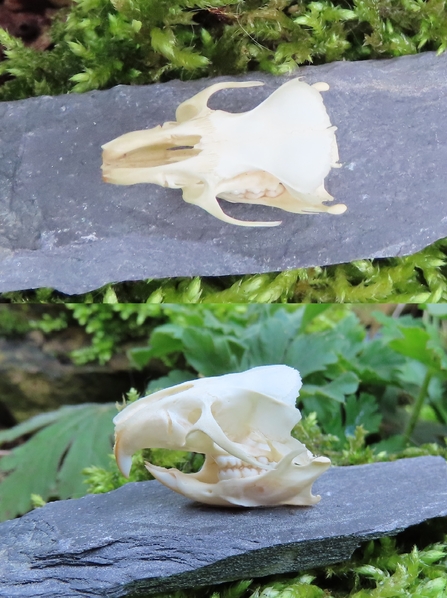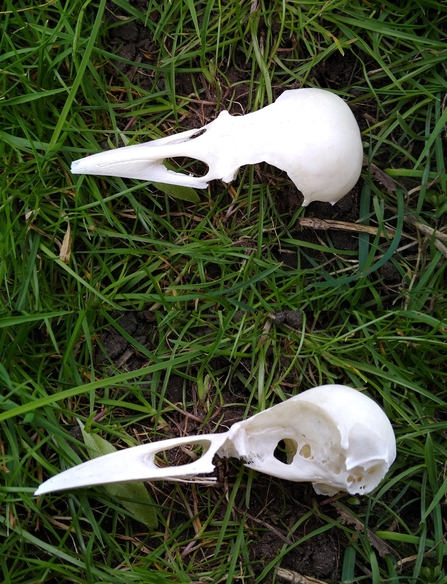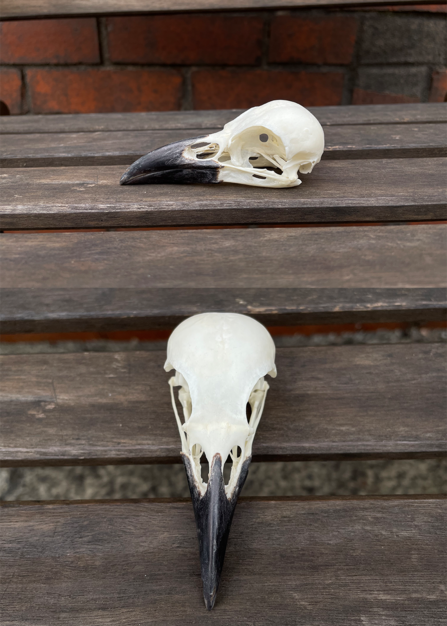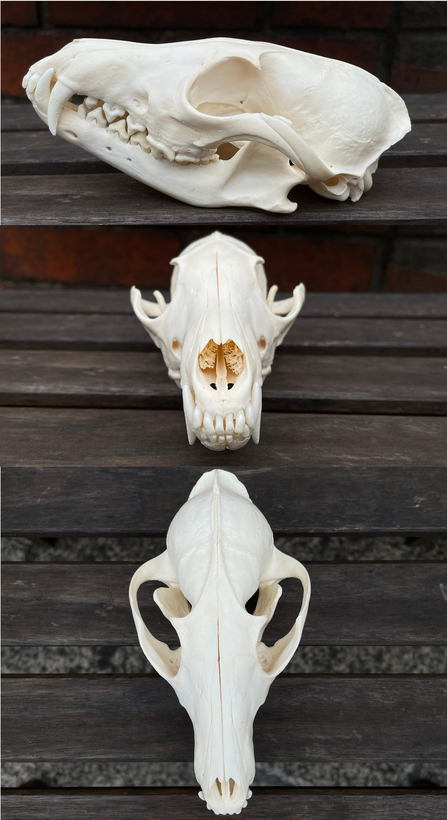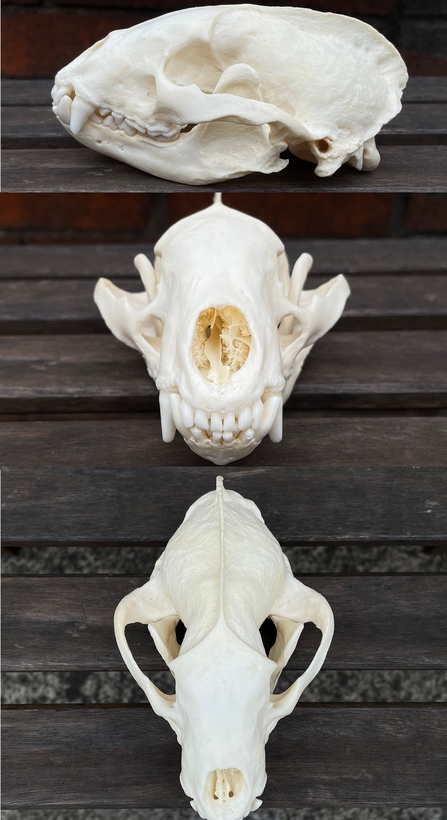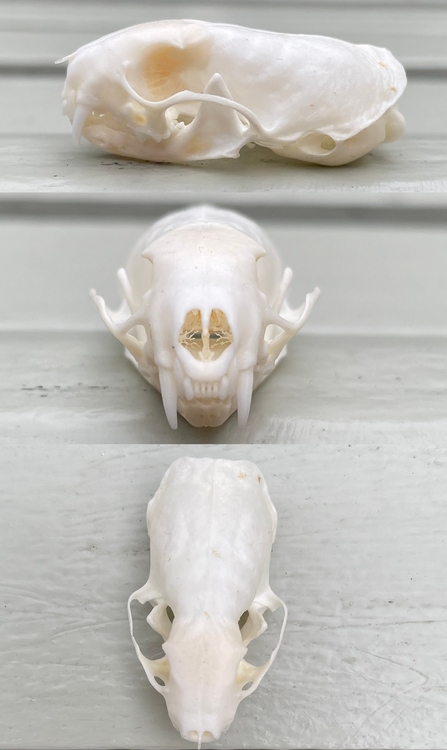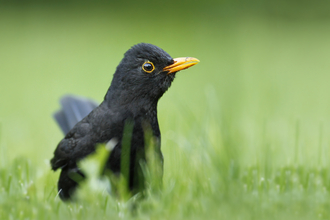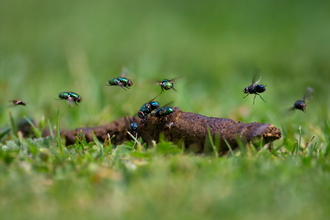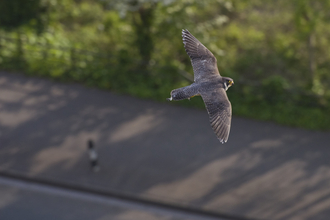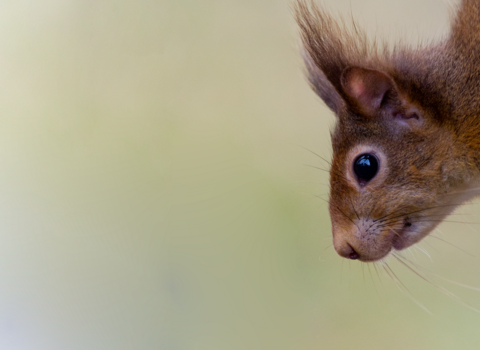What animal skull have I found?
Found a bird skull or mammal bone in the UK? Our ID guide below has some of the most common animal skulls you might find. Even if you aren’t able to identify the species you can still tell some really interesting stuff about the animal and how it lives its life. Like a skull detective!
Here are some top tips:
- Size is a great first clue to the identity - but they may look smaller than you’d expect. When you see the animal alive it’s got fur or feathers on which makes it appear bigger. Different species may also appear the same size. For example, a juvenile rat can be the same size as a mouse.
- Beak type – try to imagine birds you’ve seen that have that kind of beak. Without feathers covering them beaks can look longer than you’d think. You might be able to get some clues about what the bird eats from its beak. Is it a thick, short beak for cracking open seeds, or a thin beak like tweezers for picking up little insects?
- Teeth - herbivores, carnivores, rodents, lagomorphs, and deer, can be sorted by their teeth. But watch out - sometimes the teeth may have fallen out!
Rodent skulls
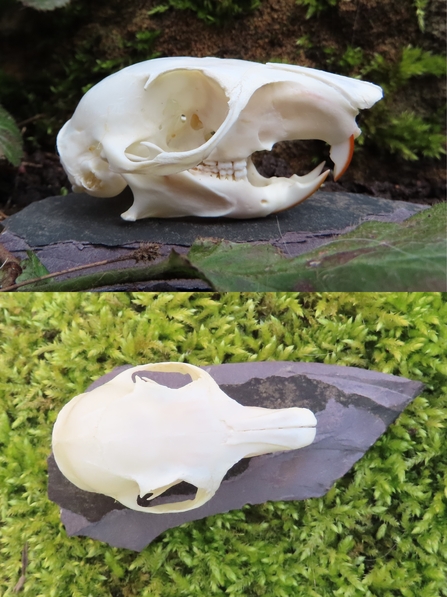
Grey squirrel skull by Ellen Kinsley
Grey squirrel
A grey squirrel has a longer skull than that of the red squirrel. You can also tell their skulls from a rat's as they have a broader snout.
Brown rat
Rats have two large incisors at the top and bottom of their mouths. Their skulls are around 4.5 cm long and their whole body measures 15-27cm.
Bird skulls
Woodpigeon
A woodpigeon's skull is around 5.5cm in length. Their total body length is 40-42cm.
Pheasant
A pheasant's skull is around 7cm long. Their total body length is 70-88cm.
Magpie
Magpie skulls are around 7-8cm in length.
Crow
Crow skulls are around 9cm in length.
Small mammal skulls
Mole skull (back is missing) by Ellen Kinsley
Mole
A mole's full length body is usually around 15cm in length (plus a 4cm tail). The skull is likely to be around 3.5 cm.
Mammal skulls
Juvenile muntjac skull by Ellen Kinsley
Muntjac deer
Muntjac deer skulls can be identified by their large suborbital pits - the bones that sit under the eye sockets. Males have prominent tusks too.
Red fox
Fox skulls have long, narrow snouts and are around 14cms in length.
Badger
Badger skulls are slightly shorter than a fox's at around 13cms long.
Weasel
Weasel's have long skulls with large eye sockets. Their full body is around 17-22cms in length.

